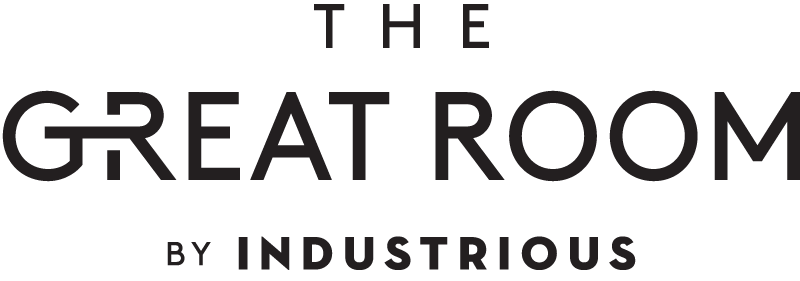While many productivity tools focus on achieving more and ticking the boxes, this handy, adaptable system emphasises working and living better. Here’s how it works, and how you can make it work for you.
Events, tasks, deadlines, people to please, kids’ activities to juggle, presentations to prepare for. Like many of us who live multi-hyphenate lives, Jaelle Ang, CEO and co-founder of hospitality-led, premium coworking space operator The Great Room, knows how this goes. “As a multi-hyphenate, entrepreneur and mother, I still have an unreasonable belief having it all. I believe that one can have it all, just not all at the same time,” she says.
“I no longer believe in seeking balance in life, I feel it’s like a trap to do that. It is important to seek the deepest clarity of what are the glass balls and rubber balls in your life now,” she says. “There are five balls in my life: health, spouse and kids, family, career and social. I always remind myself that my health is the glass ball – if I drop it, it could break irreversibly. My career is a rubber ball; it is likely that I will hit the ground (because it doesn’t ever, I am probably not doing enough or doing anything worthwhile) at some point in time, but I can and will bounce back.”
A useful – some might even call it game-changing – tool for managing all those glass and rubber balls is Personal Kanban (PK). It came into being because Jim Benson realised work life, personal life and social life cannot be treated as separate entities. “Work / life balance is not sustainable,” he says in the book he co-authored with Torianne DeMaria, Personal Kanban: Mapping Work | Navigating Life. “When we compartmentalize our lives, these elements [professional, personal and social] become pathological, pushing us from one task to the next in order to satisfy their own jealous needs.”
Benson describes PK as “A visual launchpad to personal effectiveness, spontaneous collaboration and an integrated life.”

While there is no productivity panacea that can turn you into a hyper-achieving speed demon, no matter where you work – whether that’s as a digital nomad out of a shared office in Hong Kong, from home or in a corporate office – PK can deliver something many other organisation tools don’t: fulfillment. It does this by helping you visually map everything that matters to you, within and beyond the walls of your workplace, so that you can prioritise and focus.
For the corporate team, PK is handy because you can share boards and follow team progress, and for the multi-hyphenate working remotely in a coworking space, it’s useful because it helps you stay disciplined and on track with your tasks – in work and in life.
How Personal Kanban came into being
PK has its roots in a scheduling system first created for the automotive industry, by an industrial engineer, Taiichi Ohno at Toyota. Developed with just-in-time manufacturing in mind, kanban used cards to track production in factories, in this way preventing the build-up of excess inventory at any stage of the production process.
Benson used variations of this technique in his work in software development, then he further developed the method into Personal Kanban with his colleagues at Modus Cooperandi. It helped them understand their workload, work flow, and also limit the amount of work in progress – and it’s this last part that’s key.
The rules
Recognising that we can only do so much – and realistically, we only have capacity for one task at a time (multi-tasking is so passé) – PK has adopted two rules, one of which is: limit what you’re working on at any one time. It’s rule number two, so let’s backtrack a bit and start with rule number one: visualise your work.

“Visualising work gives us power over it,” says Benson, who later honed the method with his co-author, DeMaria. “We now have a physical record of all those demands on our time. This larger view of our work and our context allows us to make better decisions.”
You can use a whiteboard, you can use sticky notes, or you can use a digital tool like Trello, Zenkit, Jira or Taskworld, to help you visualise your tasks. Benson and DeMaria encourage the use of a whiteboard and physical sticky notes, at least to start with, because “hands-on experience reinforces what we learn.” But many PK advocates use digital tools instead of physical ones, and these seem to be highly effective – especially if you want to have your PK board with you on your smartphone when you’re travelling.
Back to the second rule: limit your work in progress to just three tasks at a time. “You can only do as much work as you can handle. You can’t overload yourself. Once you do, your ability to finish and your ability to focus breaks down,” says Benson.
How to apply Personal Kanban
Here’s how it works, in a nutshell:
- Write down all the expectations you have on different sticky notes.
- Create an Options column, and put all your tasks in it. It’s much easier for your brain to take in your tasks this way, as it’s more visually pleasing than a jumble of tasks.
- Create a Doing column. Limit what you put in this column to three items, and no more.
- Create a Done column, and move tasks you’ve finished into this column.
Finish one task before you move something else onto your ‘doing’ list. “You finish, you focus [on something else]. You’re giving yourself the luxury of being able to complete something with quality, which means that you like your work when it’s done,” says Benson.
Insider tips
The beauty of PK is that you can make it your own. You don’t have to stick to three columns: you can have far more, and you can name them whatever you want, as long as you stick to Rule 1 and Rule 2 (maximum three tasks in the Doing column at any one time).
You can create a Backlog column for every single task you need to do, big or small. Don’t leave anything out: be honest with yourself Oh and this doesn’t simply have to relate to work – your PK board can include tasks you have to do outside of work – like booking your kids into swim class, paying for those concert tickets, date night, whatever!
Then put those you’re ready to do now in a Ready column – work that’s waiting to be done. These can be funneled into the Doing column when you’re good to go on them.
Long-time PK user Sven Wiegand suggests dividing your board into tasks to be done today (create a Today column for this), this week, this year, and he also has a Waiting column for those tasks that require someone else’s input in order to be completed. You can find out more about his approach here.
As well as being a useful organisation tool for individuals, PK is ideal for teams – especially if part of your team is working remotely out of a coworking space, or if they’re working in agile workspaces. You can put team tasks on a PK board using a digital tool like Kanban Zone to help you track workflow, giving everyone on your team access. You can even create different PK boards for different projects.
For further insights into Personal Kanban and how to use it, check out Benson and DeMaria’s site here.
